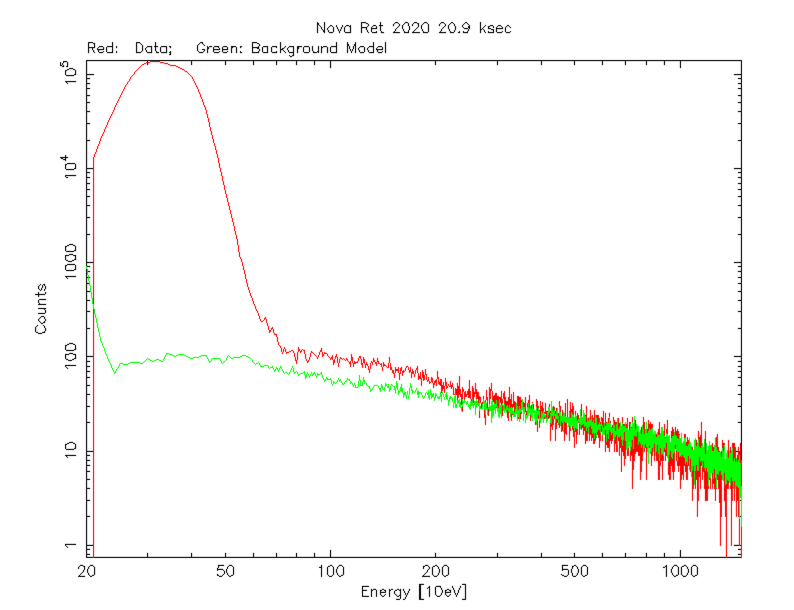NICER / ISS Science Nugget
for October 8, 2020
NICER Observes a New New Star
NICER executed a Target of Opportunity (TOO) observation to investigate the newly discovered Nova Reticuli 2020; this was triggered as part of a NICER Guest Observer (GO) proposal, led by Dr. Marina Orio (Univ. of Wisconsin), selected via competitive peer review in NICER's 2nd GO cycle. Nova Ret 2020 is the third known case of an identified cataclysmic variable star that has undergone a nova eruption. It is a binary system consisting of a compact, dense white-dwarf star accreting matter from a companion donor star. When the density and temperature of the accreted matter are sufficiently high, nuclear fusion occurs, leading to the observed nova eruption.
NASA's Swift Observatory noticed that Nova Ret 2020 had recently brightened, providing the NICER TOO trigger. NICER observed the source on 28 September for 20 ksec over a nearly 30-hour interval. NICER's large collecting area at low X-ray photon energies and its high throughput enabled a very clean detection. The accumulated spectrum (see accompanying figure) is very "soft" (i.e., dominated by low-energy X-rays) but bright, with a count rate of about 107 photons per second. The spectrum is consistent with emission from a white dwarf with surface temperature in the range 500,000-550,000 Kelvin and little or no intrinsic absorption from the star's atmosphere. Somewhat surprisingly, there is no evidence of rapid (tens of seconds) periodic modulation of the X-ray brightness, as seen in other novae.
This work was reported on 6 October, 2020, as Astronomer's Telegram #14067 by Pei et al.

Figure: The X-ray spectrum of Nova Ret 2020 measured by NICER is shown in red; the green curve indicates the estimated background during the observation.
<< Previous
Main Index
Next >>